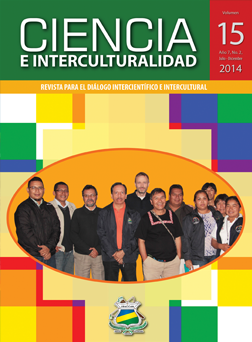RESIDUOS DE CAMARÓN SIETE BARBAS COMO ABONO ORGÁNICO EN EL CULTIVO DE TOMATE
Palabras clave:
Abono, camarón, desechos, sostenible, valor agregado.Resumen
La investigación se desarrolló con la finalidad de evaluar el comportamiento de plántulas de tomate (Lycopersiconesculentum mill) de la variedad peto 98 bajo diferentes dosificaciones de abono orgánico elaborado a base de desechos de camarón siete barbas (Xiphopenaeuskroyeri). El experimento se llevó a cabo en la comunidad de Rocky Point, Municipio de Laguna de Perlas, en donde la naturaleza del experimento se cataloga como un arreglo unifactorial, empleándose un diseño experimental de bloques completamente al azar (BCA), con 4 tratamientos y 3 repeticiones. Las variables evaluadas correspondieron a: altura de la planta (cm), diámetro de tallo (cm) y porcentaje de rendimiento (Kg), las variables se sometieron a un análisis de varianza (ANDEVA) con un 95% de confianza y prueba de rangos múltiples según el criterio de Tukey con 0.05 para la separación de medias. La mayor altura (parte aérea) de las plántulas fue con el tratamiento 3 (T3) con 250 g/planta, el segundo mejor valor de altura correspondió al tratamiento 2 (T2) con 350g/planta, seguido de los tratamientos 4 (T4), con 150 g/planta) y tratamiento 1 (T1) como testigo. Con respecto al diámetro se observó que en los primeros 45 días después de la siembra los T3 (250g) y T3 (350), no muestran diferencias significativas siendo los tratamientos en donde se obtuvo un mejor comportamiento, seguido de los T4 (150 g) y T1 (testigo), en cuanto a rendimiento de las plántulas de tomate, el comportamiento fue similar al diámetro en donde los T2 y T3, presentan mejores rendimientos en cosecha, seguidos por los T4 y T1.Summary
The research was developed in order to evaluate the tomato seedlings behaviour (Lycopersiconesculentum mill) of the variety breastplate 98, under different dosages of compost made from seabob shrimp waste (Xiphopenaeuskroyeri). The experiment took place in the community of Rocky Point, Municipality of Pearl Lagoon, where the nature of the experiment is classified as a unifactorial arrangement, using an experimental design of randomized complete block (RCB) with 4 treatments and 3 repetitions. The variables evaluated were for: height of the plant (cm), stem diameter (cm) and production percentage (kg). The variables were submitted to an analysis of variance (ANOVA), obtaining 95% of reliance and multiple range tests according to Tukey's criterion with 0.05 for mean separation. The greatest height of the seedlings (aerial part) was with treatment 3 (T3) with 250 g/plant, the second best value of height corresponded to treatment 2 (T2) with 350 g/plant, followed by the treatments 4 (T4) with 150 g/plant and treatment 1 (T1) as a baton. Regarding the diameter, we observed that during the first 45 days after sowing, the T3 (250g) and T3 (350) showed no significant difference, being the groups that obtained the best behaviour, followed by T4 (150 g) and T1 (baton). As for the tomato seedlings behaviour, it was similar to the diameter where T2 and T3 presented better crop production, followed by T4 and T1.
Descargas
Descargas
Publicado
2015-04-24
Cómo citar
Treminio.L., X., & Bartolomé F., J. (2015). RESIDUOS DE CAMARÓN SIETE BARBAS COMO ABONO ORGÁNICO EN EL CULTIVO DE TOMATE. Ciencia E Interculturalidad, 15(2). Recuperado a partir de https://revistasnicaragua.cnu.edu.ni/index.php/Interculturalidad/article/view/1764
Número
Sección
Agropecuaria

